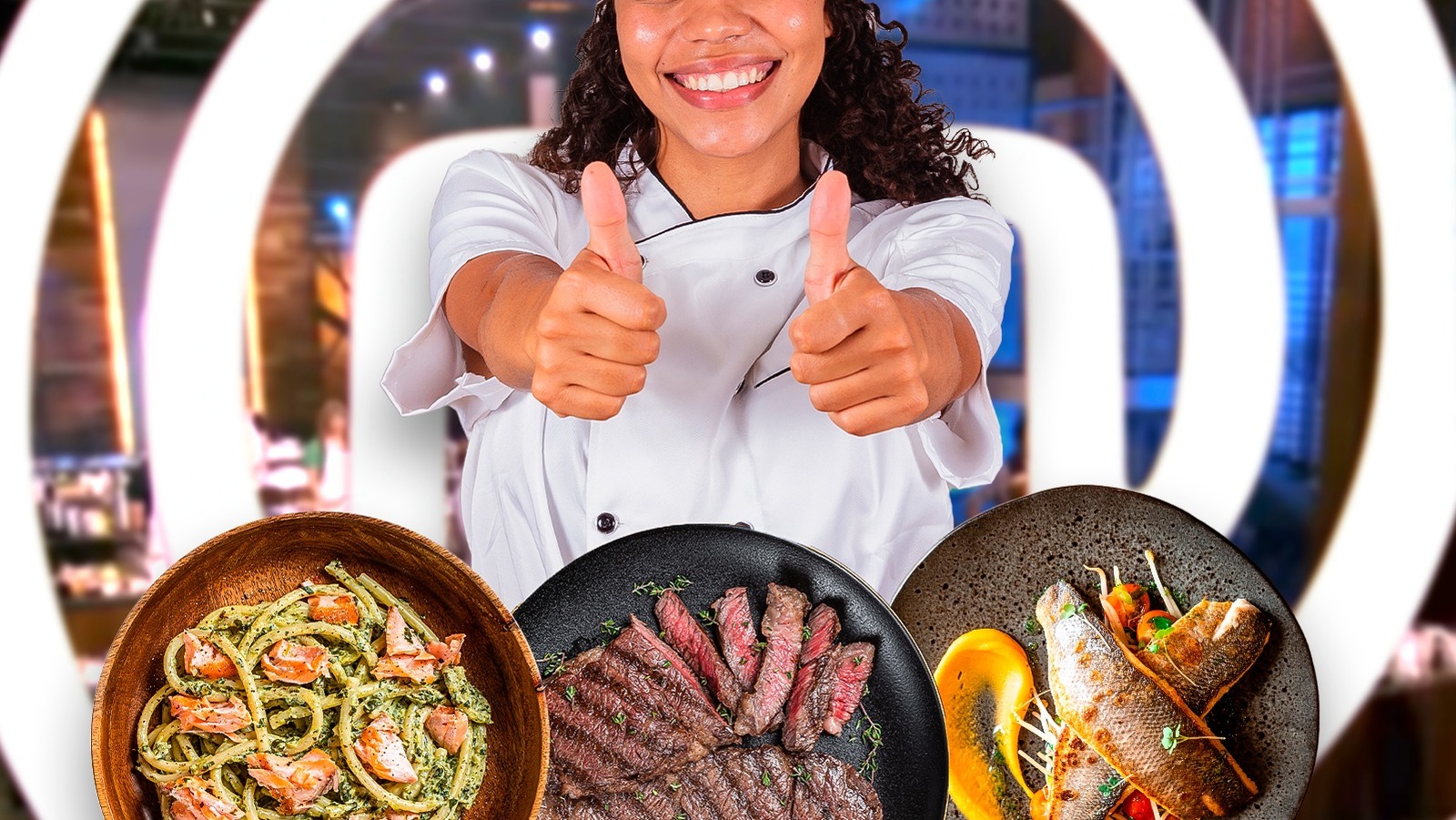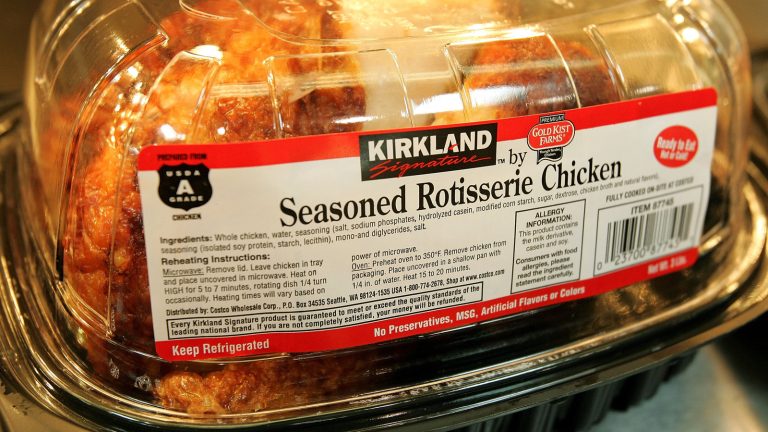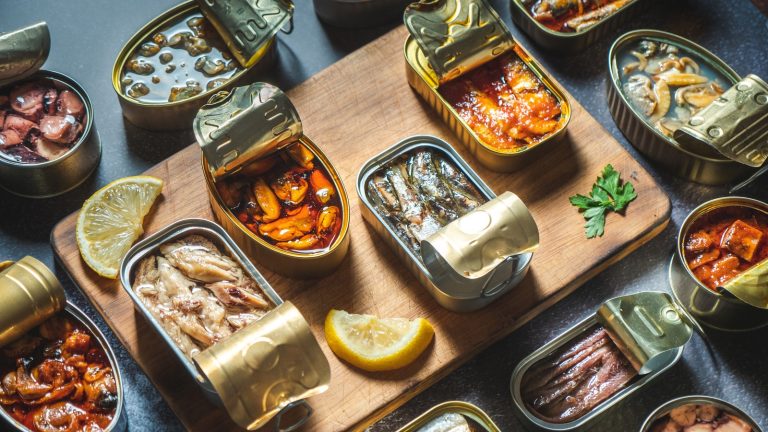Gordon Ramsay is known for many things; restaurateur, Michelin starred chef, cookbook author, TV personality, and, of course, his no nonsense attitude. His aversion to sugar coating criticism has made him an iconic TV show host, with more than 15 titles on his filmography. His approach is particularly beneficial, and more so entertaining, for competitive cooking shows, with the most notable being “MasterChef.” What sets this show apart is that it’s for the novice chefs, so the viewers can relate to the contestants more than ever. This isn’t “Iron Chef” where production is hunting for the world’s next best chef, but professional chef could be the winner’s next title.
The reality show started in Ramsay’s home of the UK back in 1990, and Ramsay joined the ranks six years later. By the time Ramsay helped kick off the American “MasterChef” in 2010, he was one of the most well known names in food media. Ramsay has been the producer and judge for all 10 seasons of U.S’s “MasterChef”, so it’s no surprise his wisdom is constantly peppered into challenges for both the contestants and the audience to learn something new. He’s joined by dozens of other world renowned culinary stars like Joe Bastianich, Aarón Sánchez, and previously Graham Elliot. The show has taught committed viewers a lot over the years, whether it be a simple pan-searing trick or thought provoking perspectives for aspiring chefs, “MasterChef” has provided us with more than just some light reality show drama.
1. Sometimes less is more
We’ve seen too many “MasterChef” contestants go overboard trying to impress judges when they would have nailed it with a classic dish done right. The kitchen is a great place to experiment, but it’s always a little risky, especially when $250,000 is on the line. Contestants regularly go above and beyond to impress Ramsay and the judges, but sometimes to a fault.
If executed perfectly, even something as simple as linguine can leave you speechless, and the “MasterChef” judges concur, ten times over. Whitney Miller was only 22 when she was the first U.S. “MasterChef,” but she was talented enough to wow the judges in just about every challenge, all by sticking with the familiar. Miller is a Southern chef and the judges could taste it in every dish she served them, celebrating classics like cornbread, catfish, and the South’s favorite, country fried chicken.
2. Time management couldn’t be more important in the kitchen
Only those who have closed out a fully booked Saturday night can understand how critical timing is in the kitchen, and that’s essentially the tense atmosphere “MasterChef” creates in these challenges. When the clock is ticking, timing is everything. Luckily we can’t be eliminated in our own kitchen, but watching chefs frantically working against the clock gives viewers some unique perspective. In the heat of the moment, chefs can blank on the most basic cooking steps, like turning down the oven’s temperature or covering a simmering pot.
Still, the biggest mistake of all is not planning properly. If the timer wasn’t blinking red, chances are many “MasterChef” contestants could successfully prepare a meal, maybe even with time to spare. But when the pressure is on, it’s hard to focus and prioritize. The lesson casual viewers can take away is prep ingredients ahead of time to avoid spending extra hours in the kitchen. This can mean browning meat ahead of time, letting dough rise the night prior, or multitasking while something is simmering.
3. Taste as you cook
Tasting as you cook seems like a given, right? Apparently, it’s not as obvious as one might expect. Unless you can make the recipe with your eyes closed (and it’s proven flawless every time by non-biased eaters) tasting your food is critical. We’ve seen “MasterChef” contestants save themselves in the final minutes of a challenge by a simple taste test, and we’ve also seen the unfortunate consequence of not taking a spoon to their sauce.
If you’re following a recipe to a tee from a trusted chef then it makes sense you wouldn’t think to give it a taste mid-cooking, but your preferences are just as important as the recipe developers’ and no two tastebuds are the same. Your ingredients could also slightly differ, depending on location and product manufacturers, which could impact the final dish. More importantly, tasting as you go is crucial when cooking on a whim. Every recipe has to start somewhere, and a whole lot of testing goes into tried and true published recipes. To become a good chef, first you have to follow recipes and ace them, then you learn how to understand flavors. If you grasp how flavors blend together and, above all, when they do, you’ll be able to anticipate new tastes and come up with your own recipes.
4. Don’t open the oven door while something is baking
This may seem like a given to the seasoned baking pros, but letting the heat out of the oven for even a moment here and there can completely sabotage your baked goods. Unlike the flexibility permitted on the stove top, baking is a science, and even half a second can ruin the process. This lesson was especially important when baking macarons in season 10. Contestant Shari Mukherjee had quite the advantage, noting that she baked anywhere between 3-6 batches of macarons a week, but the other competitors were in for quite the baking lesson.
The episode’s guest judge Candace Nelson revealed that over or under mixing dough can be a pastry’s downfall, but the oven’s temperature is the most important, especially when baking something as technical as macarons. Those who couldn’t lock down the right temperature and baking time, checking them constantly, ended up with crumbly, grainy macarons.
5. Keep your knives sharp
This is another lesson we learn again and again in episodes of “MasterChef,” watching contestants struggle to cut thin slices or julienne properly due to a dull blade. Knife skills are a factor, but the knife itself plays a huge part in the execution. A dull knife can slow you down, which while a huge concern for those on “MasterChef,” is the least of a casual home cook’s concerns. A worn-out knife can lead to uneven cuts, which will cause inconsistency in texture and when it comes to cooking time.
The importance of a sharp blade is clear whenever cooks are working to make impossibly thin slices, like when the “MasterChef” team tackled sushi in season 4. This challenge really put their knife skills to the test, and while some first-timers still managed to present well-executed sushi, their sharp, quality knife undoubtedly played a part. Ramsay recommends sharpening your knife before and after you use it — every time. “It’s far harder working in the kitchen with a blunt knife than it is with a sharp knife,” he shares on his YouTube channel. On top of that, cutting your finger with a dull blade will hurt infinitely more than if you did so with a sharp one. This is something we’ve seen far too many times on screen. Speed chopping isn’t the safest task.
6. Chaotic plating can take away from a dish
This is a frustrating mishap we see often on “MasterChef,” or really any competitive cooking show. Similar to the ‘less is more’ mindset, it can be easy to get wrapped up in the visuals of a dish and de-prioritize the flavors, but that’s the biggest mistake a chef can make. The stunning tablescapes and complex plating styles associated with fine dining adds to the special dining experience, but those plating artists are chefs first. To master the art of cooking, it’s about the taste. Many home chefs found the happy medium when it came to taste vs aesthetics on the show, but Bri Baker of seasons ten and twelve is the self proclaimed “plating queen.”
Contestants commonly put too much stock into the presentation and not enough into the food itself, but the other end of the spectrum can be just as damaging. Some “MasterChef” contestants put zero effort into presentation, whether it be lack of time or expertise, and it distracts from the delicious meal. As for aspiring chefs, always prioritize quality over the presentation. Beautiful plating can’t compensate for lack of flavor.
7. Don’t toss your pasta water
This little trick falls under the simple but genius category, and the judges of “MasterChef” are probably tired of sharing it, especially restaurateur and pasta expert Joe Bastianich. He’s provided endless insights over the years, like always salt the pasta water and don’t underwork pasta dough, but one of his most consistent pasta critiques comes back to pasta water.
When giving “MasterChef” contestants a pasta cooking lesson alongside Nancy Silverton in season eleven, Bastianich declared “the magic ingredient is the pasta water” as he poured some over his Orecchiette. With limited ingredients like most contestants face in “MasterChef” challenges, it’s important to work with what you got, and starchy pasta water is not to be wasted. Salting pasta water is an age old Italian trick that helps smooth out any clumps while naturally thickening the sauce. The leftover salty pasta water works better than that from the faucet, adding weight to the sauce like cornstarch or flour would, but in a much more delicate manner.
8. Let your meat rest before cutting
Cutting into a juicy piece of meat too early has been a common issue on “MasterChef,” but given the contestant’s limited time, we can’t really blame them. It did, however, teach viewers the importance of letting meat rest before slicing into it. Taking the blade to a steak hot off the grill will let all the flavorful juices out, which Gordon had to remind chefs in practically every season.
With larger cuts, waiting 15 to 20 minutes will guarantee a perfectly rested, juicy roast, but smaller cuts only need 5 or so minutes of rest time. This isn’t to say you’ll totally ruin your steak by slicing it too soon, but just remember when taking a bite that it could have been even better if you had a little patience.
9. Get your pan screaming hot before adding protein
Gordon Ramsay is consistently teaching this lesson in practically all of his shows, proving that a cool pan is an all too common slip up. A season 10 “MasterChef” mystery box challenge only provided contestants with one cast-iron skillet for all their cooking needs, and judges were concerned that the cooks would fall short when searing their protein.
Tossing protein, whether it be a filet of steak, chicken breast, or a slab of tempeh, into a cold pan is a fool’s game. Getting the perfect sear is everything when it comes to cooking protein, and the only way to ensure flawless browning on both sides is by keeping the temperature and cooking time consistent. A good sear can trap the protein’s natural, juicy flavors, but only at a certain temperature. If you allow your pan to heat up as your steak does, you’ll end up with one drab, grey-ish looking dinner, likely with a chewy dry center.




